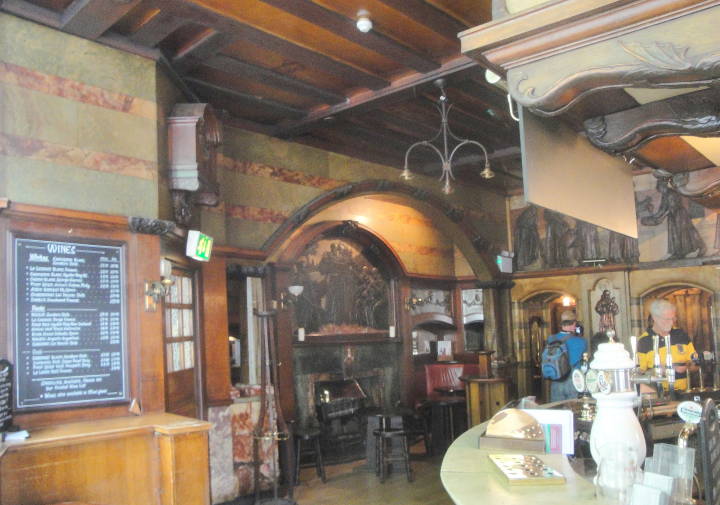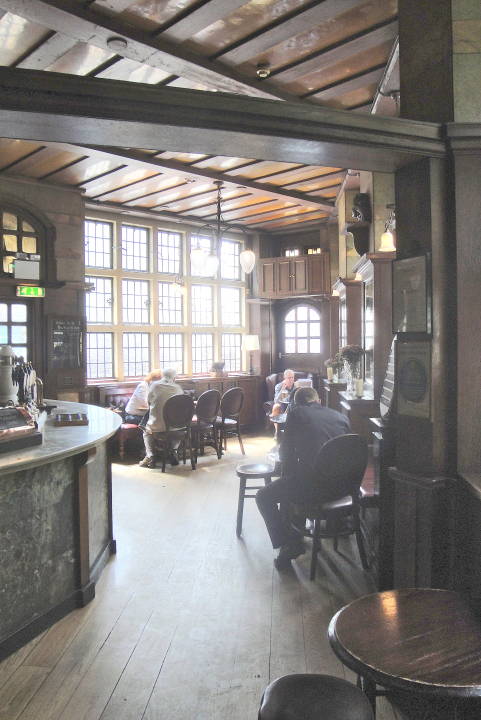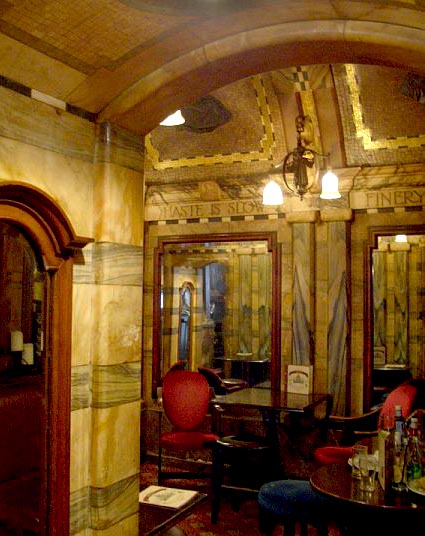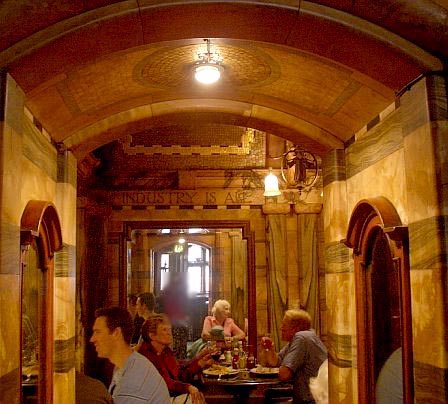Photographs at lower left and right by Jaqueline Banerjee. Additional photographs by Robert Freidus. Formatting and perspective correction by George P. Landow. Text by all three contributors. [You may use these images without prior permission for any scholarly or educational purpose as long as you (1) credit the photographer and (2) link your document to this URL in a web document or cite the Victorian Web in a print one. ]


Interior, The Black Friar Pub. Interior designed by Herbert Fuller-Clark (1869-after 1912). 1903, 1925. 174 Queen Victoria Street, London EC4. Fuller-Clark apparently made the designs for the interior in 1914, but work on them was deferred until after the war. Sculpture by Frederick Callcott and Henry Poole. Ward-Jackson points out that &ldquo Callcott created the pattern for the larger copper relief scenes, representing the day to day activities of the friars,” and Henry Poole created the relief work in the Small Saloon Bar. (311)


Poole trained under Harry Bates and G.F. Watts (whose Postman's Park memorial is only a short walk away), and worked mainly as an architectural sculptor. Both Poole and Clark were committed members of the Arts and Crafts movement, and really went to town (or, rather, city) over this fabulous little pub. Despite its distinctly medieval feel, the decor is also sometimes classified as Art Nouveau. While not one of the new breed of gastropubs, The Black Friar can also be recommended for its food, especially its pies!
Other Views
- Exterior views
- Stone carving on the exterior
- Two mosaics on the exterior
- Room with Saturday Afternoon and view of the marble Saloon
- Two Friars, one with an hourglass, another cooking an egg
- Arts and Crafts Metalwork by H. Fuller Clark and others
- Saturday Afternoon (copper bas relief)
- Stained glass window (interior)
- Don't Advertise. Tell it to a Gossip (copper bas relief)
- Tomorrow will be Friday (copper bas relief)
- A good thing is soon snatched up (copper bas relief)
- Musicmaking (copper bas relief)
- 11 works by Henry Poole
References
History provided on The Blackfriars menu.
Speel, Bob. Henry Poole, R.A. (1873-1928).
Weinreb, Ben, and Christopher Hibbert, eds. The London Encyclopaedia. London: Macmillan, rev. ed. 1992.
Last modified 3 August 2011